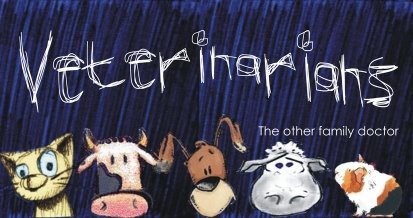
Can you count how many cats there are in this room? Sorry, no prizes for the correct answer!
Recently I was approached by two different friends on two separate occasions, who were faced with problems arising from their neighbour's many cats. One of these had nineteen cats and the other, more than twenty. These cats were entering into their gardens, their rooftops, sitting on and scratching the paintwork off their cars and creating a mess in their porch, not to mention the defecation, urination and spread of fleas and other parasites in their homes.
My friends may not have known it then, but this was clearly a case of animal hoarding.
An animal hoarder is defined as someone who accumulates a large number of animals, fails to provide minimal standards of nutrition, sanitation and veterinary care and fails to act on the deteriorating condition of the animals (including disease, starvation and even death) or the environment (severely overcrowded and unsanitary conditions) or the negative impact of the collection on their own health and well-being.
An animal hoarder must be distinguished from a person who keeps an unusually large number of pets, but who cares for them properly. A hoarder must also be distinguished from an animal breeder, who would have a large number of animals as a result of their business. The distinguishing feature is that a hoarder fails to provide the animals with adequate food, water, sanitation and veterinary care, and…is in denial about this inability to provide adequate care.
Animal hoarders are well-known to vets. Collectors exist in almost every community, large or small, rural or urban. They are in a state of denial that prevents them from seeing the filth or understanding that their animals are sick, dying or dead. As animal hoarding is linked to psychiatric problems such as obsessive-compulsive disorder (OCD), obsessive-compulsive personality disorder (OCPD), addiction, dementia, attachment disorder and focal delusion, animal hoarders need help, often psychiatric in nature but also emotional support.
According to statistics, most animal hoarders either collect cats or dogs. Men more often collect dogs and women are more prone to collecting cats. Nearly two-thirds of animal hoarders are women and 70 per cent are unmarried. A large proportion are 60 years of age or older, most are single, divorced or widowed and almost half live alone. Social isolation is common but appears to result from the hoarding behaviour rather than causing it. Most animal hoarders start their collecting even from childhood. Many have no telephone, public utilities or plumbing, and many hoarded inanimate objects as well.
Animal hoarders often adopt a parental role towards their animals. This results in their reluctance to remove any animals, even when adequate homes become available. Many of them will emphasise that their animals give them "unquestioning and unconditional love." They tend to personalise and anthropomorphise their pets and view themselves as rescuers of suffering or unloved animals. Other characteristics included the beliefs that they have special abilities to communicate or empathise with animals, that their neighbours or the public fail to recognise the care they give to their animals and that saving animals is their life's mission.
Dead or sick animals are often discovered in reported cases, yet in most of these cases the hoarder would not acknowledge the problem. Most of the time, animal faeces and urine are found accumulated in living areas and often on the hoarder's very own bed. Their justifications for their behaviour includes an intense love of animals, the feeling that the animals are their surrogate children, the belief that no one else would or could take care of them and the fear that the animals would be euthanised.
The problems that arise from animal hoarding are not only confined to the animals, but also extend to humans and the community surrounding these hoarders. Animal hoarding is at the root of a string of human health problems including horrendous sanitation, fire hazards, zoonotic diseases and neglect of oneself and dependants.
Close friends, families and neighbours are generally the first to know when the act of ‘loving animals’ changes to ‘hoarding animals’ but seldom have the information and understanding needed to effectively intervene. Learning about animal hoarding, understanding its characteristics, how it develops, interventions and preventions can help both the people involved and the animals.
Early intervention is the key to preventing the suffering caused by animal hoarding, yet relatives, friends, and neighbours who see the neglect in its early stages often misunderstand it and fail to report it until conditions become tragic. Obsessive hoarding consumes all available resources of time, money and emotion and eventually squeezes family and friends out of the picture. Once this happens, social isolation sets in as acquaintances eventually become exasperated and give up their failed attempts to help.
If you know an animal hoarder, or live beside one, take action early on, while the door is still open!



4 comments:
Purdue University Press is releasing a new book, Inside Animal Hoarding, which profiles one of the largest and most intriguing cases of animal hoarding in recent history. Celeste Killeen's investigation pries open the door to Barbara Erickson's hidden and closely guarded life, offering an in-depth view of animal hoarding. The chaos and torment discovered by local officials who'd responded to a ramshackle farmhouse in eastern Oregon was described as otherworldly, unbelievable. But, it was only the sad ending to a lifelong story of betrayal, abuse and abandonment. This in-depth look at how animal hoarding developed in one woman's life offers the rich detail and context so important in understanding how to recognize and respond to it. Dr. Arnold Arluke's discussion follows the Erickson story with current research on animal hoarding and how it ties into the Erickson case. This integration of investigative journalism and scholarship offers a fresh approach with appeal to a broad audience of readers, those new to learning about the phenomenon, and those with first-hand experience in the animal welfare field.
Thanks for visiting Celeste!
This new book sounds really interesting...thanks for sharing it with all of us.
The full title of the book is, Inside Animal Hoarding: The story of Barbara Erickson adn her 552 dogs
I have a blog Animal Hoarding New & Info. I post (& update) stories on hoarding and large scale animal neglect & cruelty.
http://animalhoarding.tumblr.com
Post a Comment